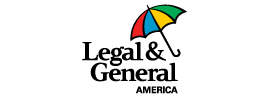
-
What is Term Life Insurance?
Term life insurance is the most affordable way to protect your family's financial security if something happens to you.
Men and women in excellent health in their mid 30s and 40s can buy $100,000+ of term life insurance for under a dollar a day.
You can buy term life insurance for 10, 15, 20, or 30 years — however long you need it.
In most cases, term life insurance proceeds are tax-free. Consult with your tax advisor if you have any questions.
-
How Much Do I Need?
Term life insurance is the most affordable – and flexible – Life insurance product available. Why? Because term life insurance provides a specific death benefit amount for a duration – or term – chosen by the policyholder. Once a 10-, 15-, 20-, or 30-year term is selected, the coverage and premium amounts remain the same for the life of the policy. So rather than paying a monthly premium for the rest of your life, you can simply buy coverage for however long you need it – usually until your children are grown and out of the house.
Life insurance is a personal affair. Standard formulas such as buying coverage equal to eight, nine or ten times your annual income are inadequate shortcuts. Online calculators can provide a general guide, but it doesn't make sense to say that someone with four young children should have the same amount of coverage as empty nesters with no mortgage and a substantial retirement fund. Other items to consider:
The time factor. Figure out how many years you'll need to be covered.
Final expenses. Determine the total cost of your funeral, burial and related expenses.
Mortgages and other debts. Tally your mortgage balance, car loans, student loans, and any other major expenses.
Education expenses. This calculation can be tricky because you need to consider the cost of a college education at the time your kids will enroll, as opposed to what it would cost today. Hint: It will be more expensive.
Income replacement. Once you cover funeral expenses, debts and education, you need to determine the amount of income required for your family members to sustain their current lifestyle.
A conversation with an experienced agent can provide the guidance you need.
-
Why Choose SelectQuote?
In 1985, SelectQuote pioneered the direct marketing of term life insurance – providing unbiased price comparisons of your best rates from highly-rated term life insurance companies.
Your personal SelectQuote agent is dedicated to:
- Answering all your questions.
- Offering all the information you need to be an informed buyer.
- Diligently shopping for your best prices from the trusted companies SelectQuote represents.
- Going to bat for you every step of the way.
SelectQuote focuses on each client’s individual needs in order to find the policy that suits you best.
SelectQuote works with only highly-rated, rock-solid life insurance companies, and lobbies on your behalf to keep pricing fair.
SelectQuote is America’s #1 Term life sales agency.
-
Companies We Represent
-
Video: FAQs Answered
View More
How accurate are SelectQuote Quotes?
Watch Video
How expensive is Life Insurance?
Watch Video
Will my Quote be my final price?
Watch Video
Why do I need Life insurance?
Watch Video
Will my rate go up after I buy?
Watch Video -
Other SelectQuote Insurance Products

Save on Your
Get Started
Auto and Home Insurance.
SelectQuote Insurance Agency.
Licensed name varies by state: SelectQuote Insurance Services, SelectQuote Insurance Agency. © 2020 SelectQuote Insurance Services. All rights reserved.
SelectQuote does not sell Life Insurance in South Dakota.
SelectQuote Insurance Services has no control over rate information posted in the reviews above through Trustpilot. Your plan could vary depending on your age, health, issuing company and other factors. Not available in all states.
* Best's Credit Ratings™ are under continuous review and subject to change and/or affirmation. For the latest Best’s Credit Ratings™ and Best’s Credit Reports (which include Best’s Credit Ratings™), visit the A.M. Best website at ambest.com. See Guide to Best’s Credit Ratings™ for explanation of use and charges.” “Best's Credit Ratings™ reproduced herein appear under license from A.M. Best and do not constitute, either expressly or impliedly, an endorsement of SelectQuote or its recommendations, formulas, criteria or comparisons to any other ratings, rating scales or rating organizations which are published or referenced herein. A.M. Best is not responsible for transcription errors made in presenting Best's Credit Ratings™. Best’s Credit Ratings™ are proprietary and may not be reproduced or distributed without the express written permission of A.M. Best Company.” A Best’s Financial Strength Rating opinion addresses the relative ability of an insurer to meet its ongoing insurance obligations. It is not a warranty of a company’s financial strength and ability to meet its obligations to policyholders. View our Important Notice: Best's Credit Ratings for a disclaimer notice and complete details at http://www.ambest.com/home/ratings.aspx
















